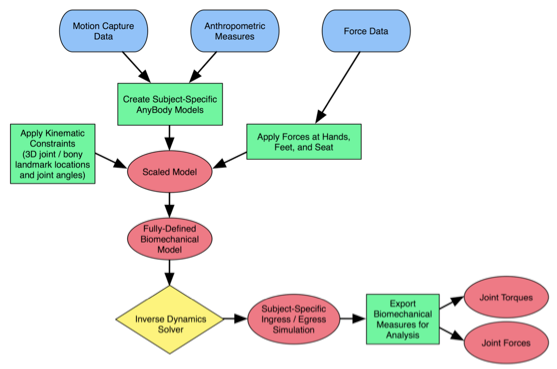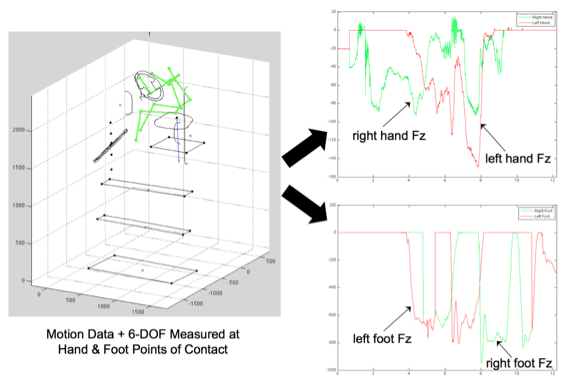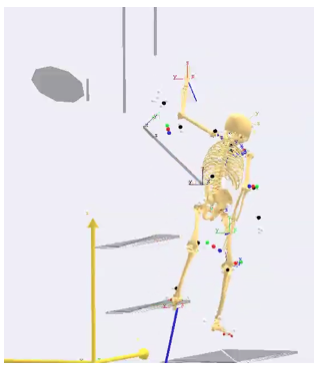Findings
Biomechanical Modeling Using AnyBody Software
Objective: Analyze ingress/egress biomechanics using the AnyBody musculoskeletal analysis software system to determine joint loads and to quantify the relationship between kinematics and reaction forces on the ground, steps, and handholds.
Method: The motion capture landmark data were processed using Vicon IQ software. Marker trajectory labeling, filling, and smoothing were augmented by custom software. Custom software was written to estimate joint center locations based on the external landmark locations. Analyses were conducted using the AnyBody software system, a commercial tool used for musculoskeletal task analysis. New methods were developed to scale the AnyBody model linkage to match each subject’s data. Custom software was written to map the joint and marker data onto the linkage to obtain model kinematics that are consistent with the complex IE motions, and particularly to respect the boundary condition changes as the feet and hands move.
Results: The figure below shows a flowchart of the methodology required to use the AnyBody software for inverse dynamics analyses. Considerable effort was needed to configure the model such that it produced results consistent with the subject kinematics while maintaining the appropriate boundary contacts. A screen capture shows an analysis of an outward facing egress event. The markers and joints are visible along with vectors characterizing the measured hand and foot forces.
Key Findings:
• Mapping the kinematics data to a fixed-dimension linkage requires new methods to ensure that the model conforms to the boundary conditions throughout the trial.
• Joint forces computed using inverse dynamics analysis are sensitive to assumptions regarding body weight distribution.
• The method developed in this work can be used to compare step and handhold configurations with respect to joint loading.



©2017 University of Michigan